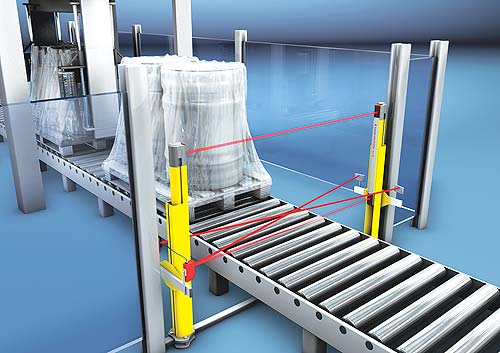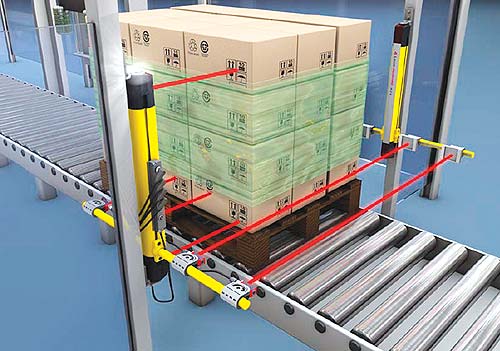 In safety technology, according to DIN EN 61496-1:2014 muting is a temporary automatic bridging of a safety function or multiple safety functions using safety-related parts of the control system.
In safety technology, according to DIN EN 61496-1:2014 muting is a temporary automatic bridging of a safety function or multiple safety functions using safety-related parts of the control system.
Muting is necessary if, for example, material has to be moved automatically into and out of a danger zone though an optical protective device (light barrier). The required muting function can be integrated into safety sensors or implemented in a separate control device.
Muting is activated and deactivated by at least two independent sequence and/or time-monitored signals in accordance with IEC TS 62046.
 Muting signals can be generated by suitable sensors as well as sent by suitable control systems. The arrangement of the muting sensors must ensure a reliable distinction can be made between permitted material and people who want to enter the danger zone through the protective device.
Muting signals can be generated by suitable sensors as well as sent by suitable control systems. The arrangement of the muting sensors must ensure a reliable distinction can be made between permitted material and people who want to enter the danger zone through the protective device.
Often used are the time-monitored 2 sensor crossed beam arrangement, the sequence-monitored 4 sensor parallel beam arrangement and the sequence-monitored 2 sensor parallel beam arrangement limited to exits. Muting should only last as long as permitted material is being transported through the protective device. This is ensured by the muting signals. A time limit (muting timeout) also ensures a safe muting duration limit in the event of malfunctions.
The muting override function is used as a time-limited override of a muting path which is blocked as a result of a malfunction, for example, if the supply voltage fails during muting, a muting sensor is defective or the muting timeout has expired as a result of the conveyor being stopped for an extended period of time.
Muting override can be initiated via the reset button – the entire danger zone must be visible when doing so. A sensorless alternative for muting is the sequence/timemonitored function Smart Process Gating (SPG) in MLC light curtains from Leuze electronic.
www.oboyle.ro


